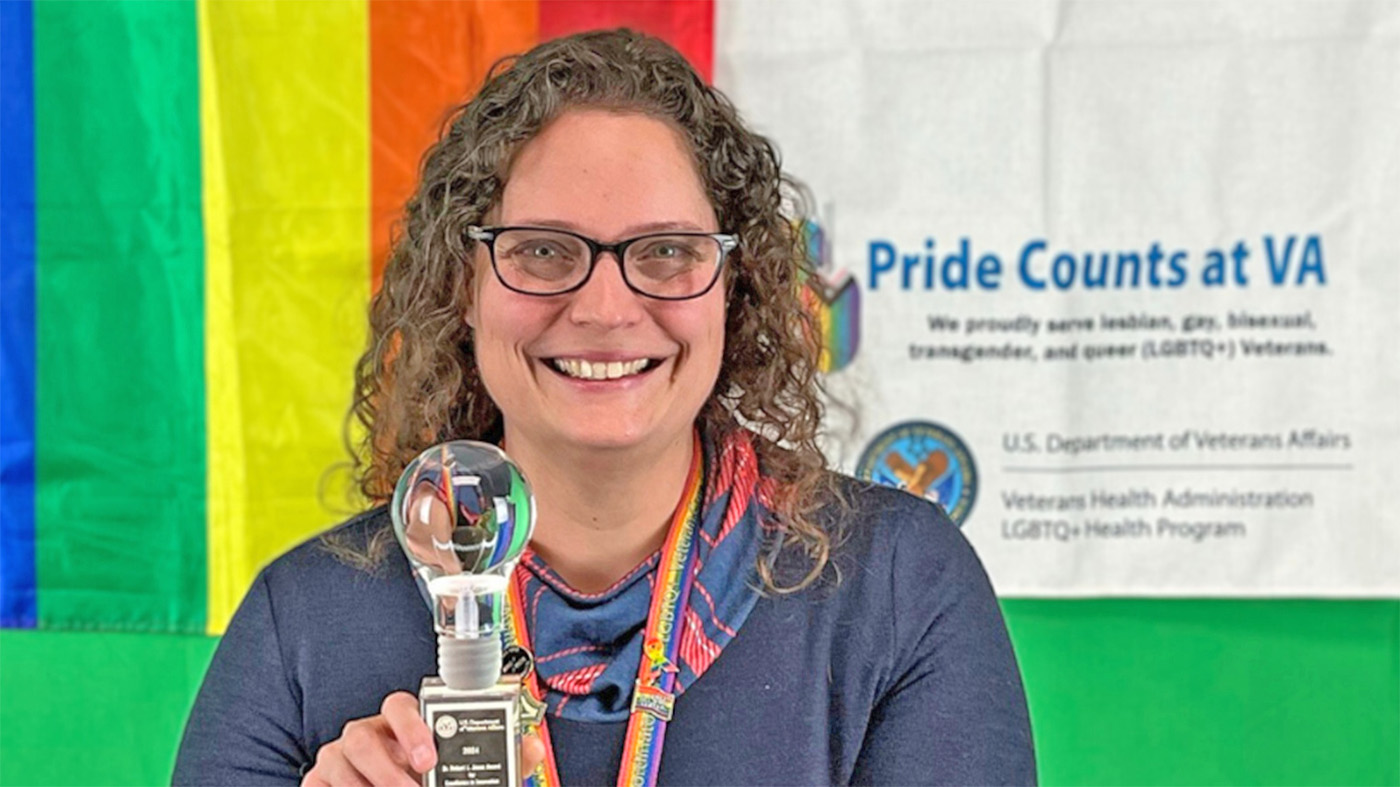“We all signed that paper to defend this country. That in itself, I think, carries a huge amount of weight in the way this unit works.”
Veteran Michael Person is not talking about when he raised his hand to serve in the United States military. He is describing the group he lives with in the Housing Unit for Military Veterans (HUMV) in the Middlesex County Jail in Massachusetts.
Person shared his story with VICE News when the outlet visited HUMV to learn more about what it’s like inside a Veterans-only experimental jail unit in 2018. “I really had no guidance. I was left to my own destruction,” Person recalled, explaining his transition out of the military.
In the five years after he separated, Person was arrested twice for drug-related theft.
His moniker could be used to represent an estimated 107,400 other persons – including Veterans – serving time in state or federal prison today. According to a report by the United States Department of Justice (DOJ), 98% of Veterans in state and federal prisons in 2016 were overwhelmingly male, on average between 51-52 years old and had sentence lengths of 14-22 years.
What justice-involved Veterans often lack: A home
One of the most damaging causes and consequences of re-incarceration is something justice-involved Veterans too often lack: a home. The risk of experiencing homelessness is 3.5 times higher for male Veterans with a history of incarceration.
About half of all Veterans experiencing homelessness who have participated in VA homeless assistance programs are involved in the justice system, creating a cycle of Veteran incarceration and homelessness.
This April, we observe National Second Chance Month as a time to raise awareness, brainstorm solutions and align efforts to ensure the successful reentry of Veterans – and all individuals – to society after incarceration.
VA helps make that second chance happen
VA is focused on providing support and resources that meet the unique needs of each Veteran. The Health Care for Reentry Veterans program includes outreach and pre-release assessment services for Veterans in prison, referrals and linkages to medical, mental health and social services, including employment services, and short-term case management assistance on release.
The Veterans Justice Outreach (VJO) program is a prevention-focused component of VA’s Homeless Programs Office (HPO). It works to identify justice-involved Veterans and provide VA services at the earliest possible point. As of December 2021, VJO specialists at every VA Medical Center serve Veterans in more than 620 Veterans Treatments Courts (VTCs).
VTCs are modeled on drug and mental health courts. They have the primary purpose of processing Veterans’ criminal cases in a way that ensures they receive treatment to address any unmet clinical needs.
Program reoffending rate 7% vs. national 77%
Appropriate treatment is vital in helping Veterans exit the proverbial conveyor belt of Veteran incarceration and homelessness. As of 2019, the reoffending rate among Veterans participating in the Massachusetts HUMV program was 7%.
This is a drastic divergence from national patterns seen among the overall justice-involved population. National patterns average around 77% across a five-year period, according to the U.S. Bureau of Justice Statistics.
HUMV attributes its success to the program’s ability to replicate critical aspects of the military. That includes creating a strong sense of community and training Veterans for life after prison through educational programming and guest speakers.
Today, three federal prisons and 74 state prisons have dorms specifically for Veterans. Law enforcement and prison officers can identify Veterans through VA’s Veterans Reentry Search Services (VRSS) software. Using VRSS is a critical first step in connecting Veterans with the programs and services that can help facilitate their transition to civilian life.
Ensuring successful reentry for our Veterans is a national responsibility and requires the help of every American. Using person-first language to avoid stigmatizing and dehumanizing labels (criminal, inmates, offenders).
Hiring and housing Veterans in your community are important steps Americans can take in supporting Veterans with justice involvement.
Our Veterans have sacrificed so much to preserve this promise. It is now our turn to ensure every Veteran can fully enjoy the freedoms they have earned.
Topics in this story
More Stories
Bob Jesse Award celebrates the achievements of a VA employee and a team or department that exemplifies innovative practices within VA.
The Medical Foster Home program offers Veterans an alternative to nursing homes.
Watch the Under Secretary for Health and a panel of experts discuss VA Health Connect tele-emergency care.








This is a good program for veterans who run afoul of the law in the civilian sector, but consideration should also be given to those with bad discharges. Many of those in civilian jails have committed offenses far more serious than what got others dishonorable or bad conduct discharges from the military, but good paper is a qualifier for help under this program. All incarcerated vets should be eligible.
I would imagine that many of those in civilian jails got there after being branded with bad paper, thus making them unemployable, which lead them to what got them incarcerated,
Reaching out
We’ll never been incarcerated but experiencing the transition horrors